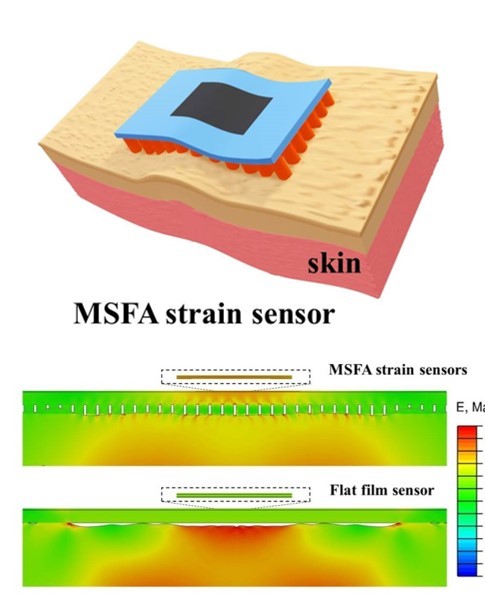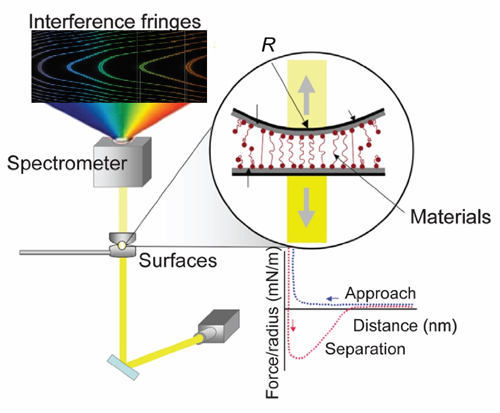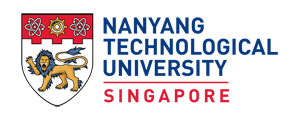Biomimetic and Soft Interface Laboratory (BSIL)

Bioinspired materials and surfaces
Nature provides many
important lessons on material design and processing. In biology,
evolution is the designing process, which has led to many
fascinating materials systems in terms of structure, functionality,
and performance. Marine mussels use a cascade of proteins to achieve
their strong and durable adhesion in ocean water, which is still a
great challenge for many synthetic adhesives. The
cuticle of insects and other arthropods is a great example of fiber
reinforced composite materials with rather complex and hierarchical
structures using chitin and protein building blocks. The goal of our
research is to use engineering design principles to analyze
biological systems to evaluate the quality of biological material
designs, and to develop novel materials inspired by the biological
systems with advanced mechanical, optical, and biomedical
properties.

funcTIonal polymer surfaces
 Surface
tethered polyelectrolyte brushes can adapt to surrounding
environments in response to external stimuli. Such polyelectrolyte
brushes are becoming highly important in a wide range of practical
applications, such as cell adhesion, drug delivery, lubrication,
sensors, coatings, and water filtration. In many of these
applications, the brushes are not able to achieve equilibrium on an
operational time scale, and therefore the dynamic (time- and rate-
dependent) surface forces (i.e., repulsion, adhesion, and friction)
of polyelectrolyte brushes and the kinetics of their structural
change in the presence of external stimuli are most relevant. We are
exploring the connection between the kinetic structural change of
polyelectrolyte brushes and their dynamic surface forces, especially
frictional forces upon having external stimuli, which is critical to
many of the applications mentioned above.
Surface
tethered polyelectrolyte brushes can adapt to surrounding
environments in response to external stimuli. Such polyelectrolyte
brushes are becoming highly important in a wide range of practical
applications, such as cell adhesion, drug delivery, lubrication,
sensors, coatings, and water filtration. In many of these
applications, the brushes are not able to achieve equilibrium on an
operational time scale, and therefore the dynamic (time- and rate-
dependent) surface forces (i.e., repulsion, adhesion, and friction)
of polyelectrolyte brushes and the kinetics of their structural
change in the presence of external stimuli are most relevant. We are
exploring the connection between the kinetic structural change of
polyelectrolyte brushes and their dynamic surface forces, especially
frictional forces upon having external stimuli, which is critical to
many of the applications mentioned above.
Flexible skin sensors
 Increasingly
health concerns arising from an ageing society and poor modern
lifestyle habits pose a heavy burden on healthcare system,
presenting new requirements for personalized real-time health status
monitoring. Our aim is to build a platform
(flexible sensor) that could analyse important ionic and metabolic
biomarks in human sweat via an integrated on-skin flexible device.
Apart from the development of flexible skin sensors, we also
explore new materials that can improve the performance of various
flexible sensors, such as conductive hydrogels and structured
adhesives. We are particularly interested in applying our
bioinspired materials to the flexible electronic devices to improve
the performance of the sensors.
Increasingly
health concerns arising from an ageing society and poor modern
lifestyle habits pose a heavy burden on healthcare system,
presenting new requirements for personalized real-time health status
monitoring. Our aim is to build a platform
(flexible sensor) that could analyse important ionic and metabolic
biomarks in human sweat via an integrated on-skin flexible device.
Apart from the development of flexible skin sensors, we also
explore new materials that can improve the performance of various
flexible sensors, such as conductive hydrogels and structured
adhesives. We are particularly interested in applying our
bioinspired materials to the flexible electronic devices to improve
the performance of the sensors.
Beyond-equilibrium Materials
 Soft
interfaces such as polymer surfaces and cell membrane are often not
at thermodynamic equilibrium. Their properties are governed by
dynamic (time- and rate-dependent), non-equilibrium interactions
that occur during for example, manufacturing processes, but much of
our understanding on such systems is based on at-equilibrium
concepts. The successful development and technological realization
of next-generation functional soft surfaces will likely depend upon
transitioning from equilibrium materials to materials with
multidimensional, hierarchical structures and beyond-equilibrium
properties. Such a transition will require understanding of and
control over materials interactions at the nanoscale. Interactions
that hold soft materials together are often comparable in magnitude
to the thermal energy; therefore small external perturbations (e.g.,
temperature, mechanical stress, and light) can induce macroscopic
molecular reorganizations. The molecular structure of soft
interfaces can therefore be tailored to achieve optimal
functionalities on different time and length scales.
Soft
interfaces such as polymer surfaces and cell membrane are often not
at thermodynamic equilibrium. Their properties are governed by
dynamic (time- and rate-dependent), non-equilibrium interactions
that occur during for example, manufacturing processes, but much of
our understanding on such systems is based on at-equilibrium
concepts. The successful development and technological realization
of next-generation functional soft surfaces will likely depend upon
transitioning from equilibrium materials to materials with
multidimensional, hierarchical structures and beyond-equilibrium
properties. Such a transition will require understanding of and
control over materials interactions at the nanoscale. Interactions
that hold soft materials together are often comparable in magnitude
to the thermal energy; therefore small external perturbations (e.g.,
temperature, mechanical stress, and light) can induce macroscopic
molecular reorganizations. The molecular structure of soft
interfaces can therefore be tailored to achieve optimal
functionalities on different time and length scales.
